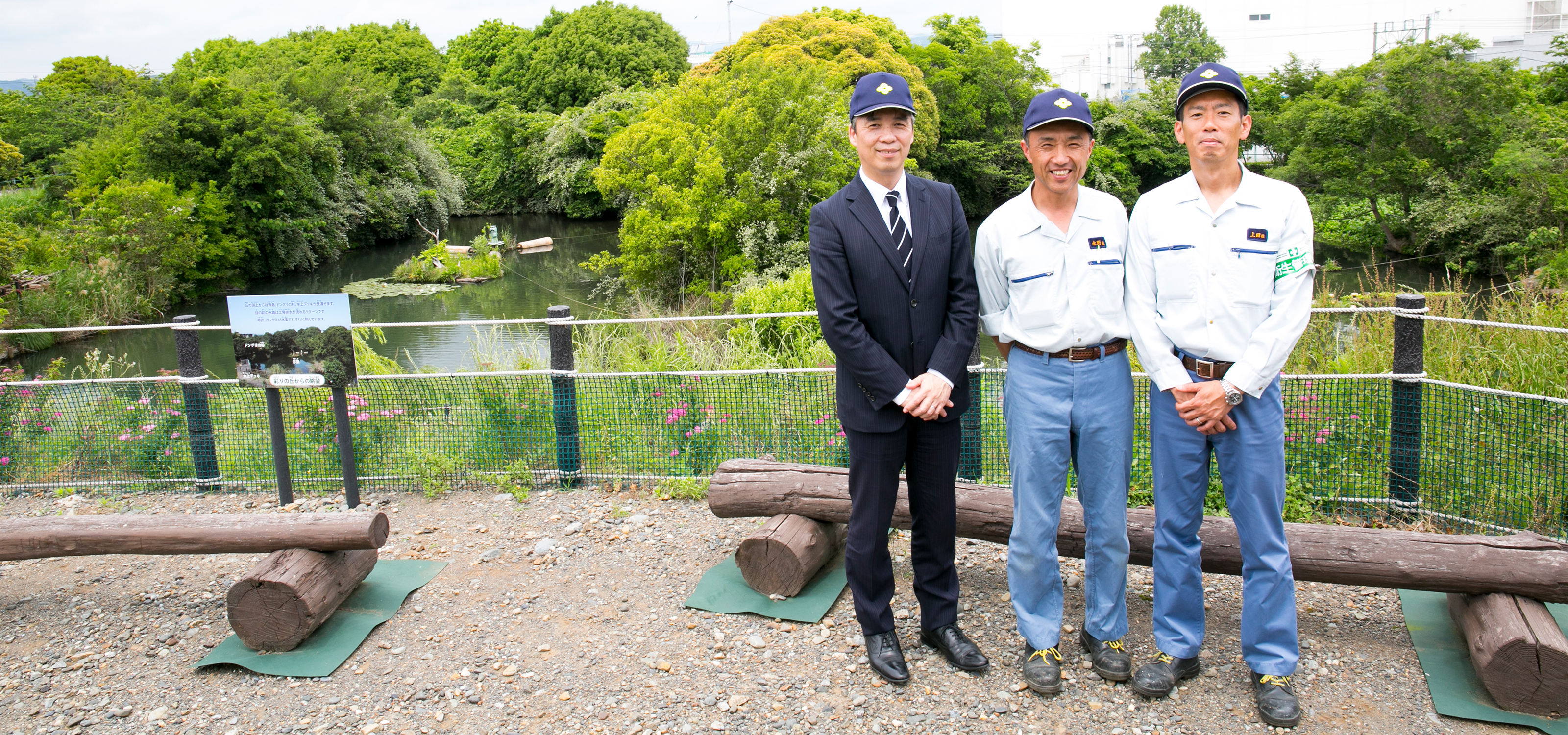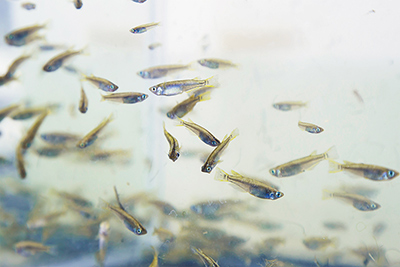Share the aspirations of people working for the Sumitomo Group
who are devoting their energy and talent to socially beneficial endeavors
in a host of fascinating fields.

On the Shida Plains, a stretch of attractive countryside in Shizuoka Prefecture, is a tranquil pond mirroring the sky. Peer into its depths and chances are you will see killifish (Oryzias latipes) darting back and forth. The pond is in the midst of woodland, mostly Chinese hackberry (Celtis sinensis), which provides an ideal habitat for the distinctive, fittingly named jewel beetle (Chrysochroa fulgidissima) or, in Japanese, tamamushi. This biotope, named Ikoino-mori, meaning tranquil scene, is on the site of the Shizuoka Plant of Sumitomo Bakelite Co., Ltd. The picturesque spot is home to all manner of creatures and plants.
“We have been developing environmentally friendly products as part of our efforts to minimize the environmental burden. It seemed only natural to expand the scope of our efforts to include conservation and regeneration of biodiversity. Indeed, creation of this biotope came to symbolize our environmental initiatives,” says Takayoshi Kumagai.
Akira Nagano continues, “We asked Professor Tatsumi Yamada of nearby Tokoha University to investigate the flora and fauna in the dykes within the plant site. He found we share the site with rare killifish and that kingfishers are frequent visitors. So, inspired by a desire to create an environment where killifish can flourish and kingfishers nest, we sought to restore the original landscape, a verdant interplay of water and woodland.

The project was launched in 2012. Extensive planting of native species and eradication of non-native ones ensured that the emerging biotope fit seamlessly into the ecosystem of the area. Now, five years into the project, shoals of killifish are a common sight in the pond.
“The biotope has been open to the public since this spring. The first step toward an informed appreciation of nature, as well as of environmental issues, is to become interested in your natural surroundings. We are eager to offer our employees and local residents opportunities to cultivate such an interest,” says Keiji Ueda.
This scenic spot, where people have created a space for nature to flourish and be appreciated, is an eloquent expression of the environmental philosophy of Sumitomo Bakelite Co., Ltd.
*Biotope: Habitat of a particular ecological community
Reprinted from SUMITOMO QUARTERLY NO.149